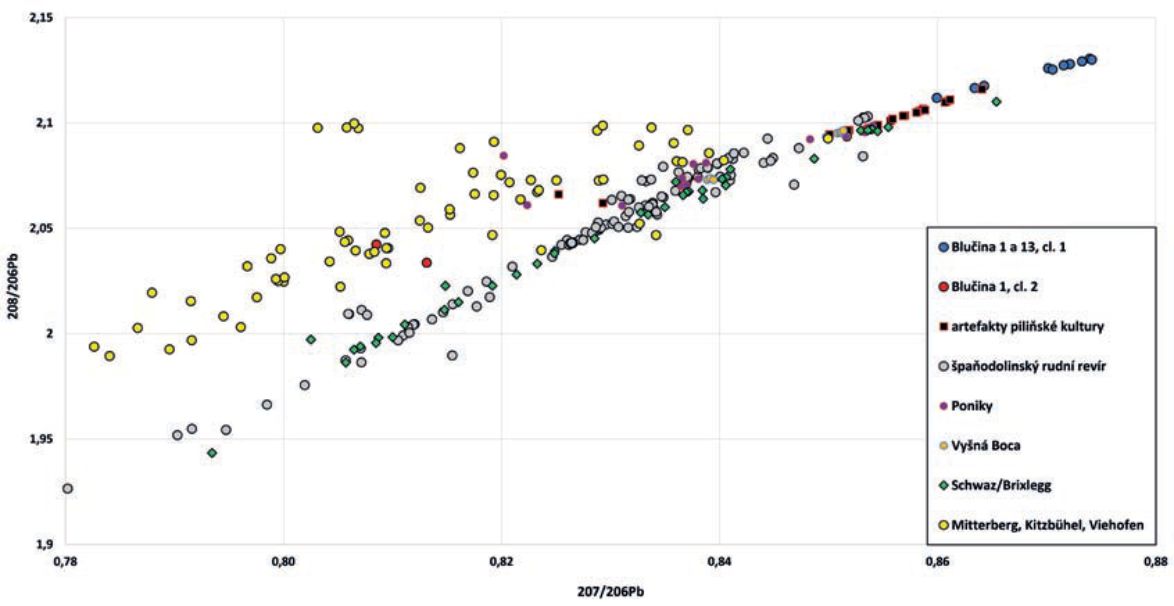Contribution to the issues of the distribution of copper from central Slovakia in Moravia in Late Bronze Age on the example of the metal hoards Blučina 1 and Blučina 13
DOI:
https://doi.org/10.35686/AR.2019.25Keywords:
copper ingots, ICP-MS/ICP-OES, lead isotope analysis, copper provenance, fahlore copper, Moravia, West Carpathians, Late Bronze AgeAbstract
Current modern, as well as older elemental analyses of metal artefacts from the period of Early Copper and Early Bronze Age are showing the distribution of copper material, originating in the area of Western Carpathians, in the western part of central Danube area, i.e. in the area of current Moravia, with the exception of Eastern Alps and south-east Europe. In all above mentioned chronological periods it is a copper from West Carpathians area coming from tetrahedrite ore. In given context appears a question of the importance of the copper from West Carpathians area in Moravia in times of peak production of bronze industry in the period of Urnfields cultures. Basic results of chemical and isotope analyses of the hoard Blučina 1 from the Late Bronze Age, uncovered in South Moravia show the presence of copper with tetrahedrite chemical structure. The authors of submitted article decided to add another analyses of metal ligatures by the methods ICP-MS and ICP-OES, as well as the analyses of stable isotopes of hoard 1 and 13 from Blučina to this known fact. On the basis of the results, the authors of the article are discussing the origin of the tetrahedrite copper material from the deposits in the Western Carpathians and Eastern Alps.
Downloads












